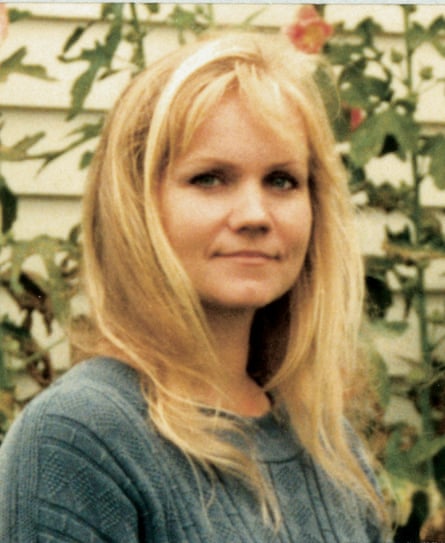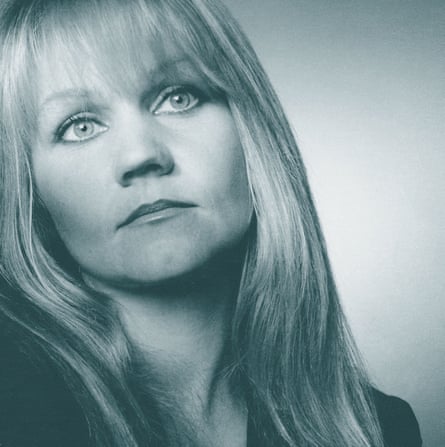On a late May day in 1996, the singer Eva Cassidy and her bandmate Chris Biondo drove to a remote factory in rural Virginia to collect copies of the recording that turned out to be the last she would ever make. “We picked up a total of about 1,100 cassettes and CDs,” Biondo recalled. “When we got in the car, Eva cracked open a box and started getting very worried. She felt she wasn’t going to be able to sell them all. I’ll never forget her comment: ‘When I’m dead and they find me, there’s going to be boxes of these in my basement,’ she said. Her expectations for the record could not have been more minimal.”
After all, Cassidy had been performing for nearly a decade by then in relative obscurity and, while she had a number of meetings with record company executives in that time, they never went beyond the talking stage. Worse, by the summer of 96, the 33-year-old was facing something dire. Over the course of the next few months, she would receive increasingly grim diagnoses of a cancer that had already begun to make quickening race through her body, robbing her of any chance of making a mark during her time on earth. Given that, who could have foreseen that Cassidy’s music would one day generate a sustained catalogue that would sell in the multi-millions, creating chart hits all over the world? “At the time, we just hoped to make enough money to buy a PA system,” Biondo said.
This week will mark 25 years since Cassidy died of melanoma cancer, just 10 months after recording the live album she and Biondo had driven out to pick up that day. The story that emerged later – of a talent barely recognized in her lifetime, who went on to achieve rapturous posthumous acclaim – has become one of the most dramatic bad news/good news tales in pop history. But it never would have happened without the stalwart efforts of some dedicated supporters, as well as several connections that brought her songs to the attention of more media gatekeepers than normally receive credit in the tale.
The small label that set things in motion, Blix Street Records, seemed an unlikely engine to power such a success. Before making a deal with Eva’s estate, the imprint had achieved modest sales with recordings by jazz instrumental bands and Celtic singers, the best-selling of whom was Mary Black. It was another singer on the label, Grace Griffith, a friend of Cassidy’s from the Washington DC club scene, who introduced her music to Blix Street chief Bill Straw. “We have this wonderful nightingale,’” Griffith told him, Straw recalled. “I’m afraid we’re going to lose her.”
“As soon as her vocal came on, I felt it was extraordinary,” he said. “By the time I finished the album, I came to the conclusion that this was one of the best singers ever.”
Though many have come to similar conclusions since, Biondo was one of the first to do so. He met Cassidy in the winter of 1986 when, on the recommendation of a mutual friend, she came to visit him at his small home recording studio. “She was afraid to come inside because she had not done any recording like this before,” Biondo said.
Once she began to sing, however, he was instantly taken with her natural skill. “A lot of people take lessons to learn music theory and how to do harmonies,” he said. “She could just do it. I watched her come up with three- or four-part harmonies out of nowhere. She would hear it in her head and then sing anything she heard.”
Biondo believes that skill is what freed her to bring so much emotion to the songs. “There are a lot of components to someone trying to pull off a tune,” he said. “They have to think about the technical parts, about what the next note is and what the phrasing will be. But because those things were so natural to Eva, it allowed her to go right to the next level, which was to go inside the song and feel the lyrics.”
Her skill also meant she could improvise the tunes at will, as well as bend the notes with a sculptor’s care. “She could change the melody to something the band had not heard before on a gig-by-gig basis,” Biondo said.
Then there was the sheer sound of her soprano, graced by a tone as plush as fleece. “It’s the purity of the tone that struck me,” said Rob Burley, who wrote the book Songbird, about Cassidy’s life. “The unadorned quality of it shines through.”

At times, however, the subtlety of her approach, and the quiet intensity of it, could fly over the heads of some audiences. “We never played loud which was a problem for us,” Biondo said. “One time, we played this club in southern Maryland and we were doing ballads, country tunes and the clientele was into Lynyrd Skynyrd, so people were leaving. The guy who had hired us to play said, ‘How about I pay you and you guys go home?’ It’s never a good thing when someone pays you to leave.”
On the other hand, Biondo said Cassidy “thought that was kinda cool,” an attitude that underscores her focus on the performance rather than its reception. “She just liked to go out and sing,” he said. “She didn’t want anybody to jump up and down.”
Cassidy remained equally cool when it came to meetings with record companies. “Maybe half a dozen companies came down to talk to her,” Biondo said. “But she never did the kinds of things the people who think they’re going to get a contract do, which is to act all giddy and make fast friends with the A&R people. I don’t think they were too impressed with her enthusiasm level.”
Cassidy’s low-key response had two sources: her introverted character, and her concern that the industry might try to squeeze her omnivorous musical taste into a box. When one company executive asked Cassidy what kind of music she wanted to record, she told him, “anything but that pop crap,” Burley said. When the prestigious Blue Note Records gave Cassidy’s band a budget of $3,500 to cut six songs, she covered six different genres. “You could see that the business sense and who the artist is was going to collide,” Biondo said.
At one point, Blue Note tried pairing her with a smooth jazz band on the label, Pieces of a Dream, for a few songs but the singer despised the result. A more pleasing proposal came from Apollo Records, run by civil rights activist Percy Sutton, a label connected to the vaunted Harlem-based theater. “They sent her a contract which meant she could have quit her day job (in a plant nursery) and gotten a yearly salary,” Biondi said. “That was a dream come true.”
Unfortunately, before Cassidy could sign, the company folded. That’s the whole reason Cassidy and her band cut the Live at Blues Alley album. It was essentially a hail-Mary pass to get attention and earn some badly needed cash. Sadly, around the same time a mysterious mole on Cassidy’s back began to raise concerns. Because she hadn’t seen a doctor in years, Biondo insisted she go to his. But she delayed for six months. When she finally went, it instigated a procedure that became far more invasive that was first assumed. The doctor had to take the skin from the back of her neck all the way down her spine in a three-inch-wide swath. While the surgeon thought he caught all the cancer, it came back with a vengeance. “It was bad news after bad news,” Biondo said. “She had cancer in her lungs, her brain, her arm, her back.”
Several months of heavy chemotherapy followed, to no avail. In her dying days, Cassidy’s music was brought once again to various labels. And they still turned her down. “The thing that pisses me off is that there wasn’t anybody smart enough to realize what was there,” said Biondo. “When they heard Eva, they should have known.”
Bill Straw had heard Cassidy’s music by then; he was invited by Griffith to meet her at a benefit held for the singer two months before her death. But he felt it would be ghoulish for him to attend. Six months after she died, however, he met with her parents. Straw had the advantage of understanding the kind of specialized audience he assumed she could reach at that point. It helped that there were no other serious bidders. Though Cassidy had self-released just three albums in her lifetime – including a collaboration with DC go-go pioneer Chuck Brown, a solo work, and the live Blues Alley album – she had some 127 recordings in the can. From that deep trove, Blix Street fashioned an ideal set titled Songbird, which they issued in 1998. A myth has arisen that the album sold nothing until it was picked up by BBC Radio 2 two years later, but, according to Straw, the American press jumped on it quickly, with rave reviews in publications as mainstream as People magazine. Once the label convinced a Boston radio station to play her music, “we sold 10,000 CDs in that city in two weeks. We kept having these little explosions,” Straw said.
The Mount Vesuvius moment, however, came when Blix Street’s associated label in the UK, Hot Records, hired Tony Bramwell, a record promo guy from the 60s who had worked with the Beatles, to promote the music. He took it to the producer of Terry Wogan’s huge morning show on Radio 2. “They listened because of Tony Bramwell’s lineage,” Burley said. The result instantly resonated with British listeners, generating snowballing sales. Just before Christmas 2000, after Top of the Pops 2 played a blurry video of Cassidy singing Over the Rainbow, the album soared to the top of the UK chart.

In the years since, the demand for her music has encouraged the release of no fewer than 12 subsequent albums, consisting of either previously unheard or repackaged performances. This December will see the release of yet another – a 25th anniversary edition of Live at Blues Alley. Biondo, who is credited as producer on most of her recordings, doesn’t believe that all of that music deserves to be heard. “I don’t think Eva would want it all out,” he said. “She didn’t get the chance to censor her own stuff and I don’t think that’s fair, especially since she had such strong feelings about people not hearing her at her best.”
Even Straw believes one release shouldn’t have happened – the Wonderful World set from 2004. Still, he said, pressure from the public dictated that release. As to what Cassidy herself would have made of the sheer scale of the attention she has received, Biondo said, “she would have been scared shitless.”
He believes she would have preferred a more measured, and controllable, degree of attention. “I have this day dream about Eva every once in a while,” Biondo mused. “In the dream, she isn’t dead and she’s as loved as she is now. I see her singing in this little restaurant that’s behind my house. Maybe 40 people can fit in there and she plays there every night and people pay a lot of money to see her. And they’re quiet and they really listen. To her, that would be heaven.”
